A California cactus garden, all planted in pots
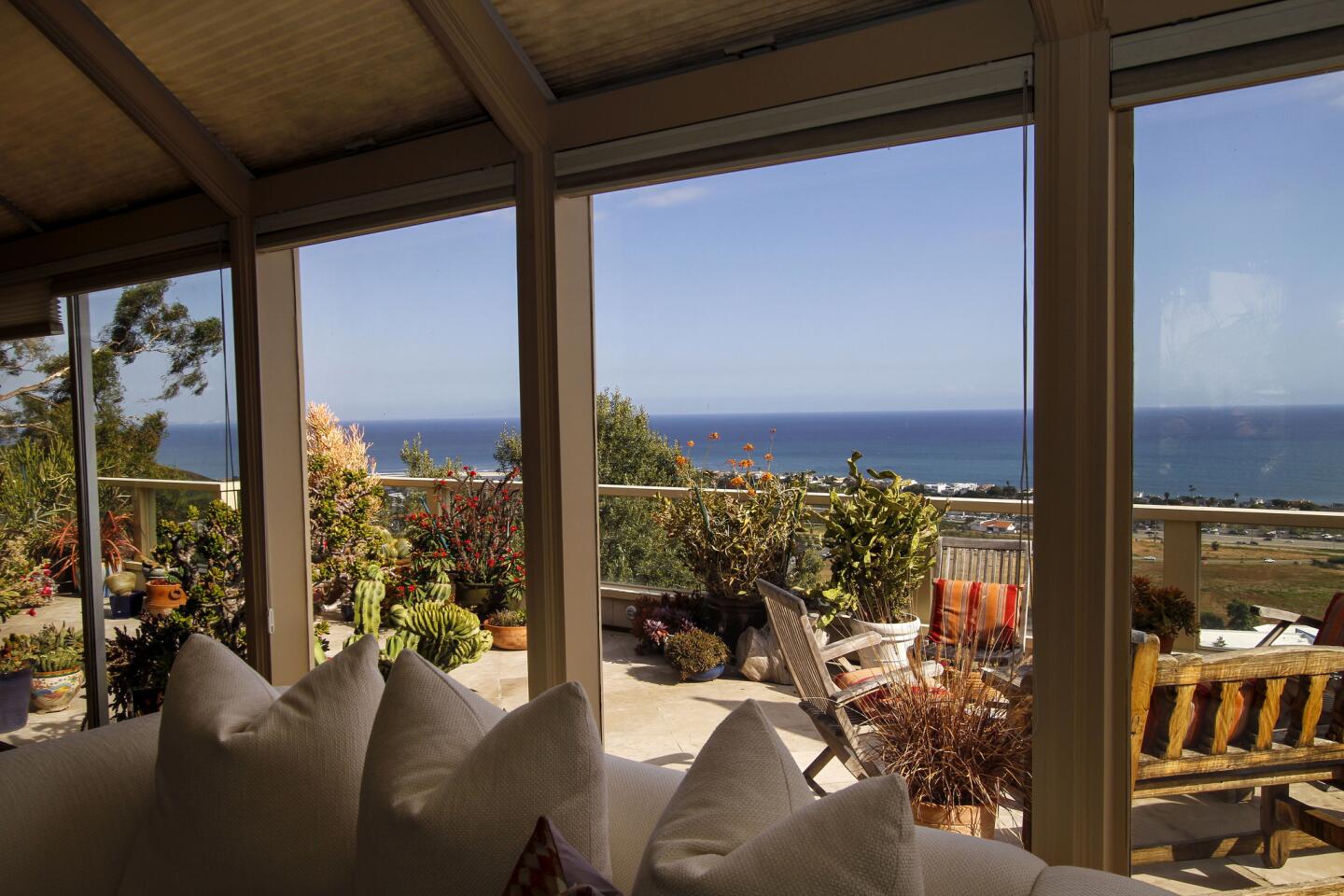
Picture windows in Kurt Kamm’s living room offer views of the potted cactus garden and the Pacific beyond. It’s a vibrant landscape, even though he doesn’t have an inch of ground into which to plant. (Ricardo DeAratanha / Los Angeles Times)
Author Kurt Kamm says he has a severe brown thumb, but his terrace garden in Malibu is a vibrant palette of color, pattern and texture thanks to low-maintenance potted cactuses and succulents -- 112 of them at last count.
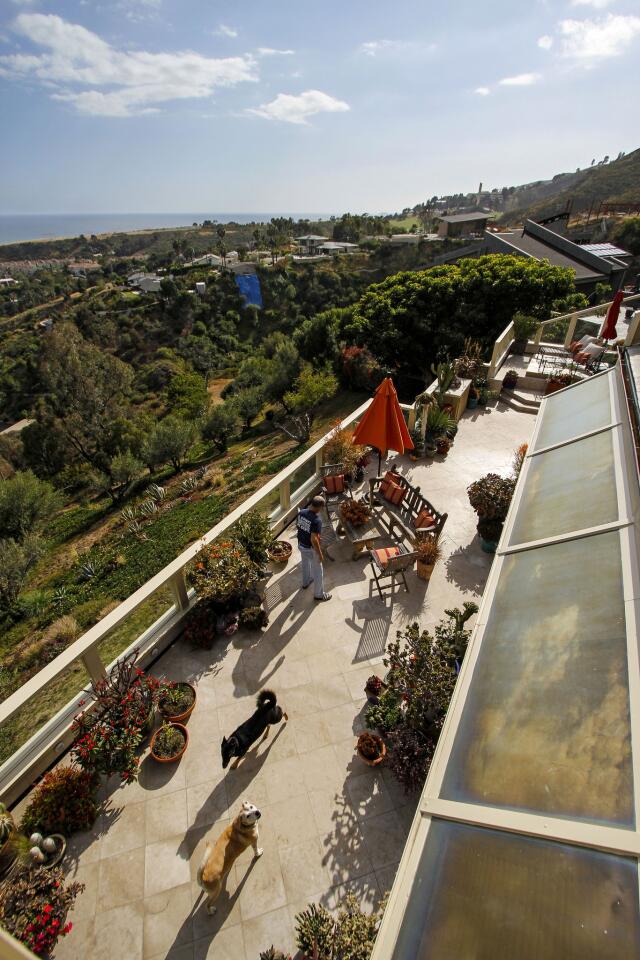
Kamm’s two dogs, Sierra and Lucy, have free run of the long terrace and are smart enough to avoid the cactus thorns. Hummingbirds are drawn to the cactus flowers, he says, and blue jays frequently perch on the plants. (Ricardo DeAratanha / Los Angeles Times)
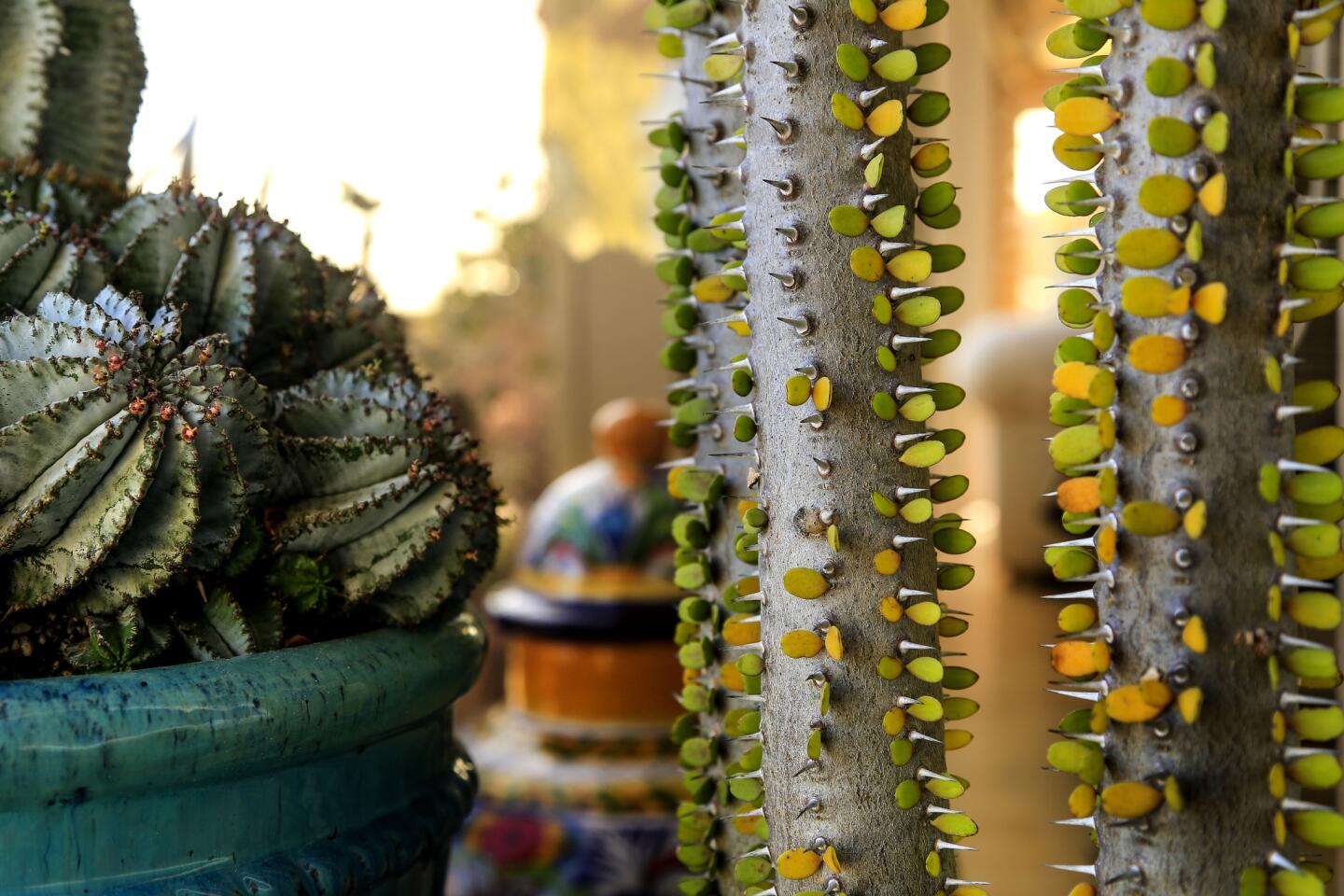
“I’ve had this cactus for five years,” Kamm says of the Alluaudia procera, the striking, tall, cylindrical cactus on the right with small green and yellow leaves. “It was 4 feet tall when I bought it. Now it’s almost 12 feet.” The plant to the left is Euphorbia horrida. (Ricardo DeAratanha / Los Angeles Times)
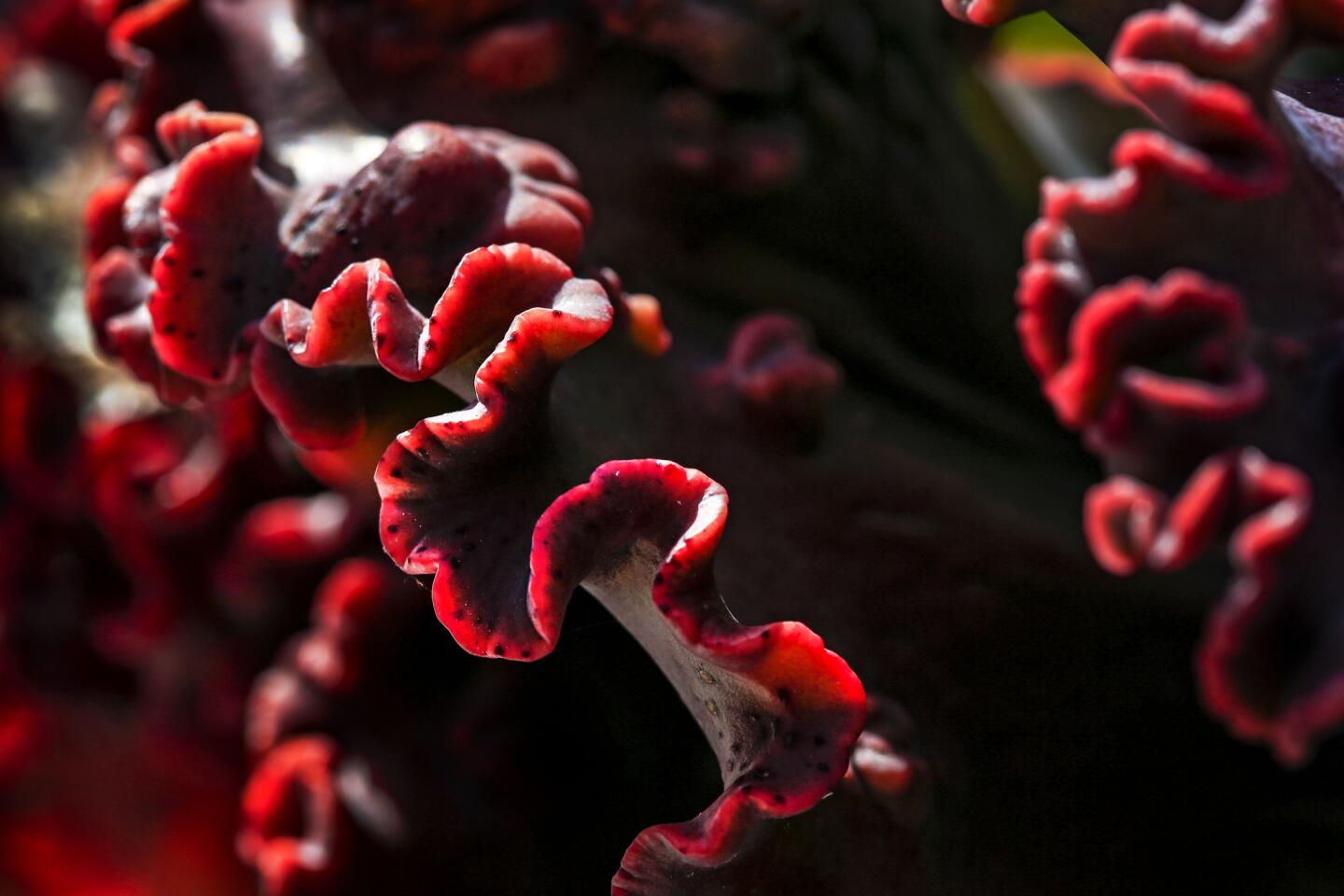
Detail of an Echeveria gibbiflora hybrid. (Ricardo DeAratanha / Los Angeles Times)
Advertisement
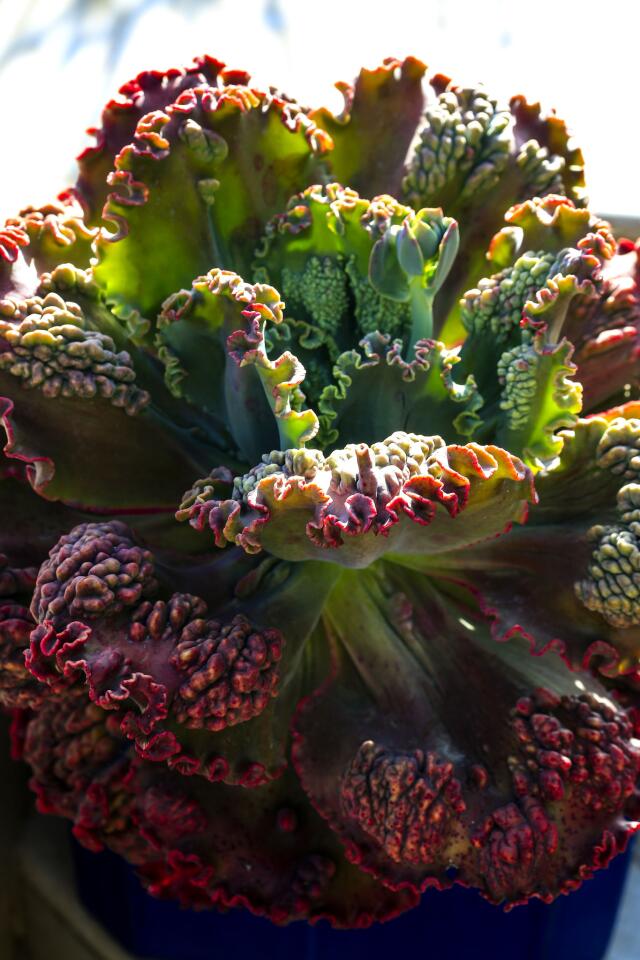
The Echeveria gibbifora hybrid “reminds me of something you would find swimming underwater next to a coral reef,” Kamm says. (Ricardo DeAratanha / Los Angeles Times)
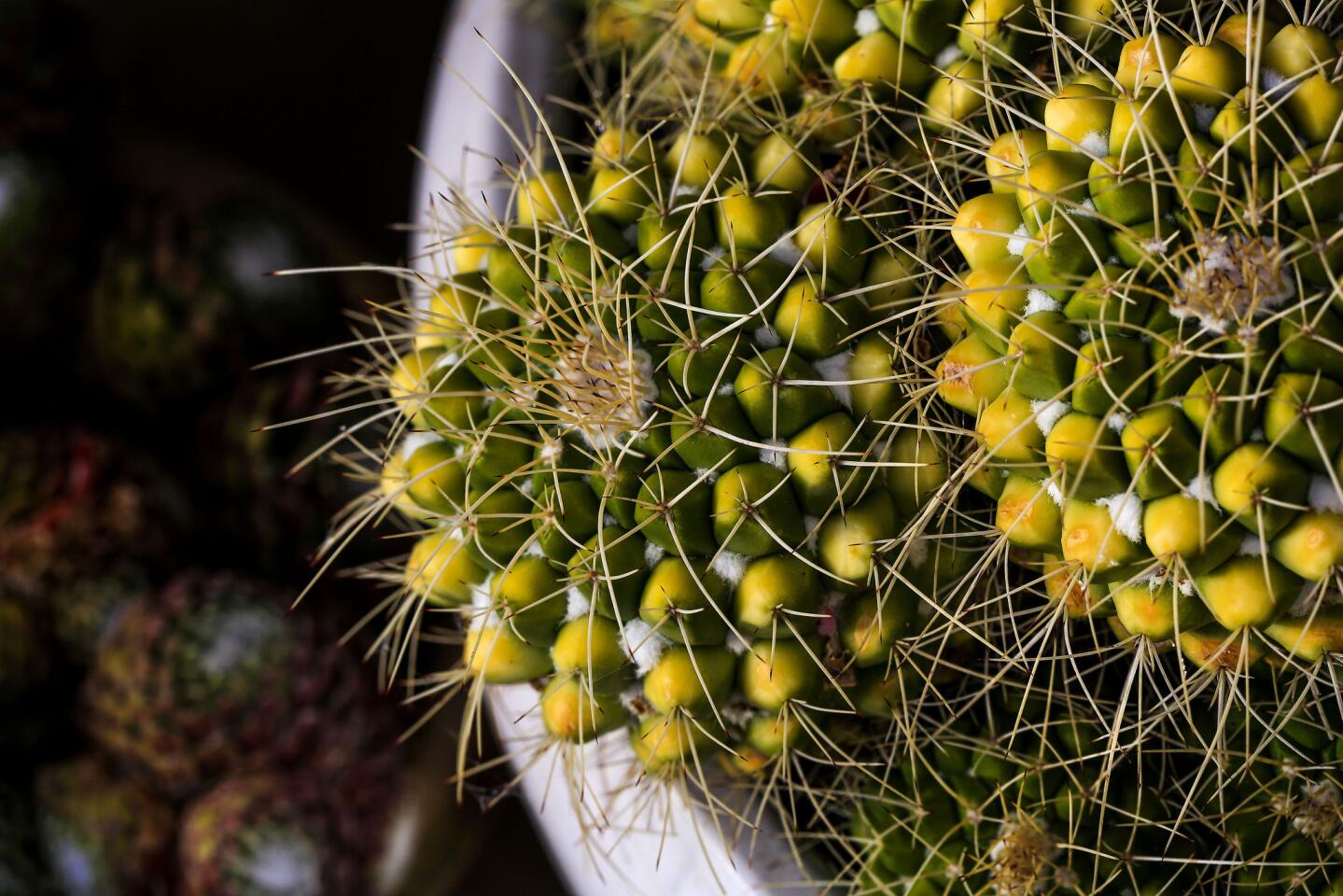
Kurt Kamm describes Mammillaria compressa as “one nasty cactus.” The big ones look like trouble, with all those thorns, he said, “but the little ones that look soft and fuzzy are the real killers.” (Ricardo DeAratanha / Los Angeles Times)
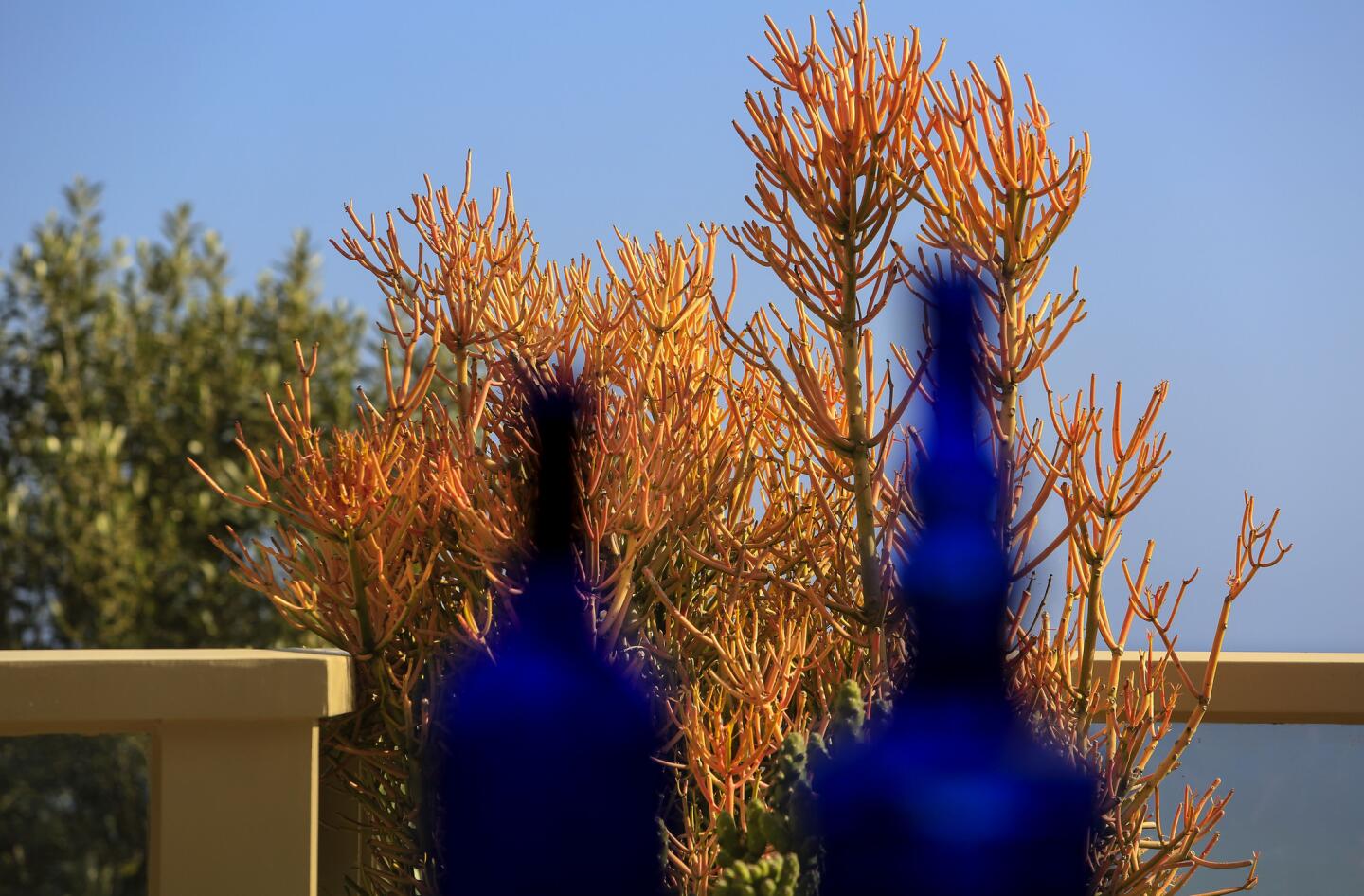
The Euphorbia tirucali cultivar known as Sticks on Fire glows brightly behind the silhouette of blue glass at the Kamm residence. “In cold weather, Sticks on Fire gets a dark red, and in hot weather it’s more of a faded yellow-green,” Kamm says. “It reminds me of my great uncle, who was tall and skinny and changed color when he got hot.” (Ricardo DeAratanha / Los Angeles Times)
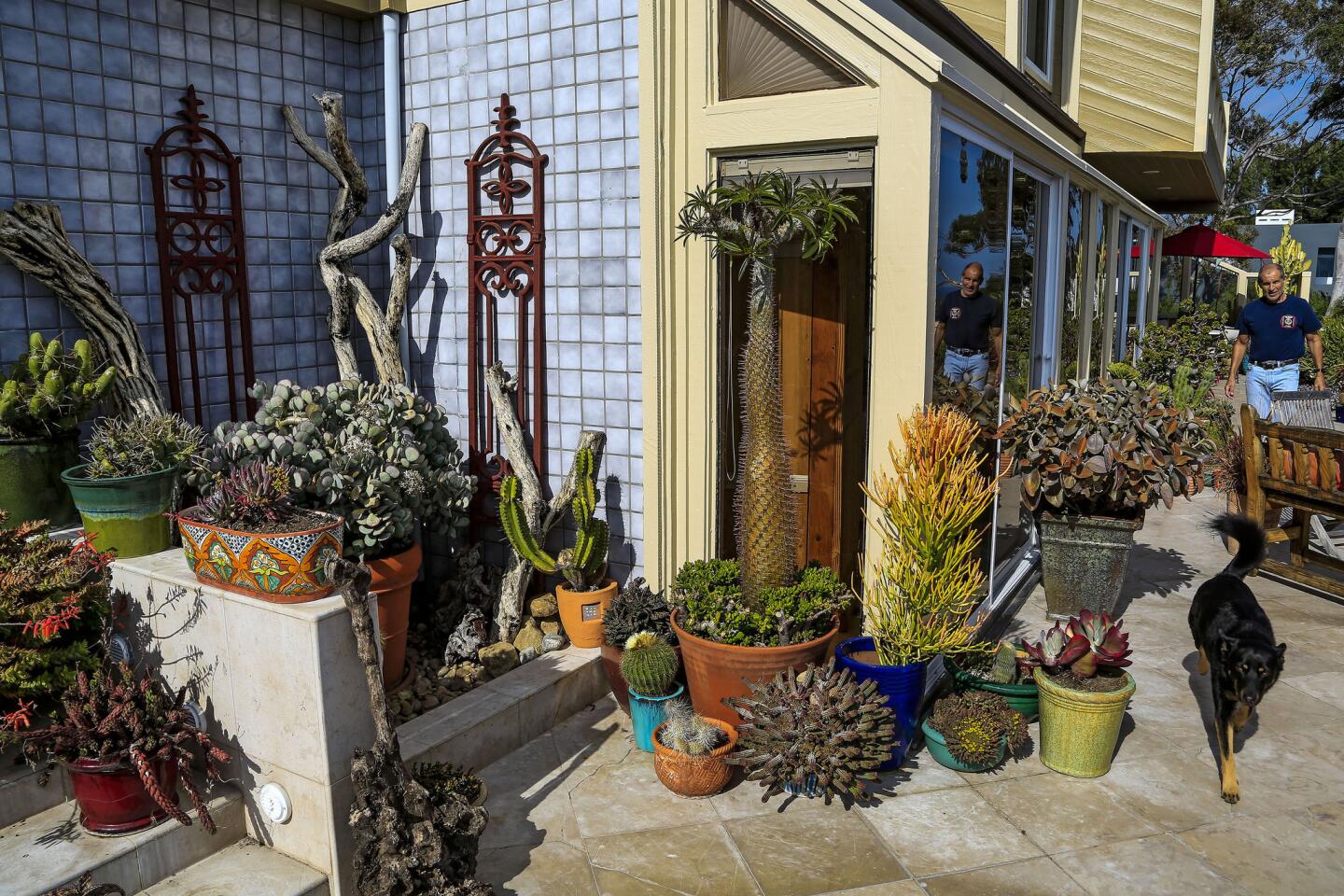
Kamm salvaged olive branches from a wildfire that came dangerously close to his hillside home about six years ago. He placed them in a corner of the terrace surrounded by cactuses “as a souvenir of the fire that almost ate my house,” he says. The tall plant by the door is Pachypodium lamerei. Sierra, a whippet-husky-shepherd mix, gives it and the other prickly plants a wide berth. (Ricardo DeAratanha / Los Angeles Times)
Advertisement
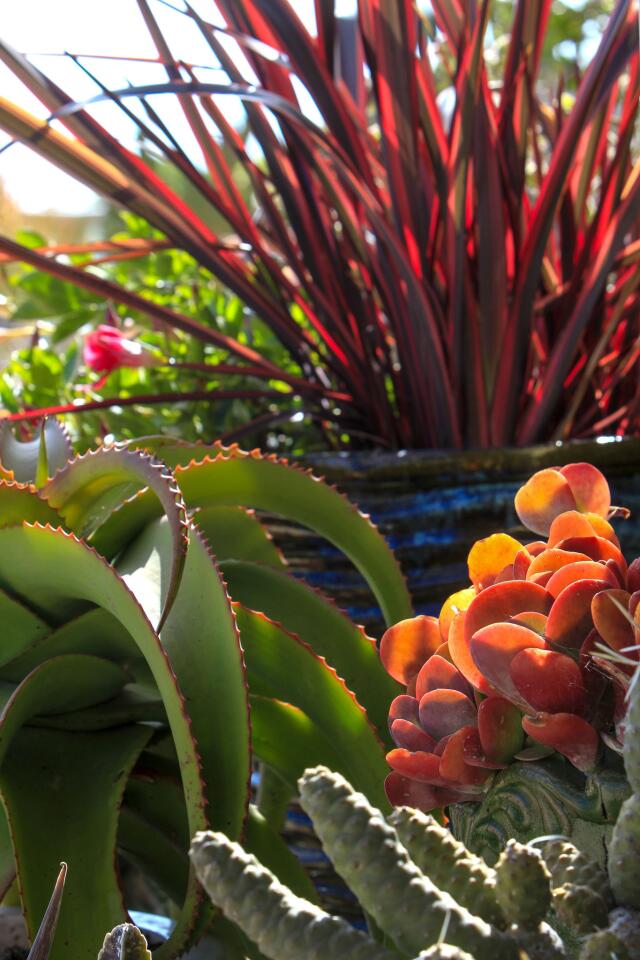
An array of sculptural succulents provide different shapes and hues: Aloe vanbalenii, with the serrated orange-tinged leaves; reddish Kalanchoe luciae, on the right; Tephrocactus articulatus, the tubular cactus in the foreground. They’re all backed by a scarlet-hued phormium. (Ricardo DeAratanha / Los Angeles Times)
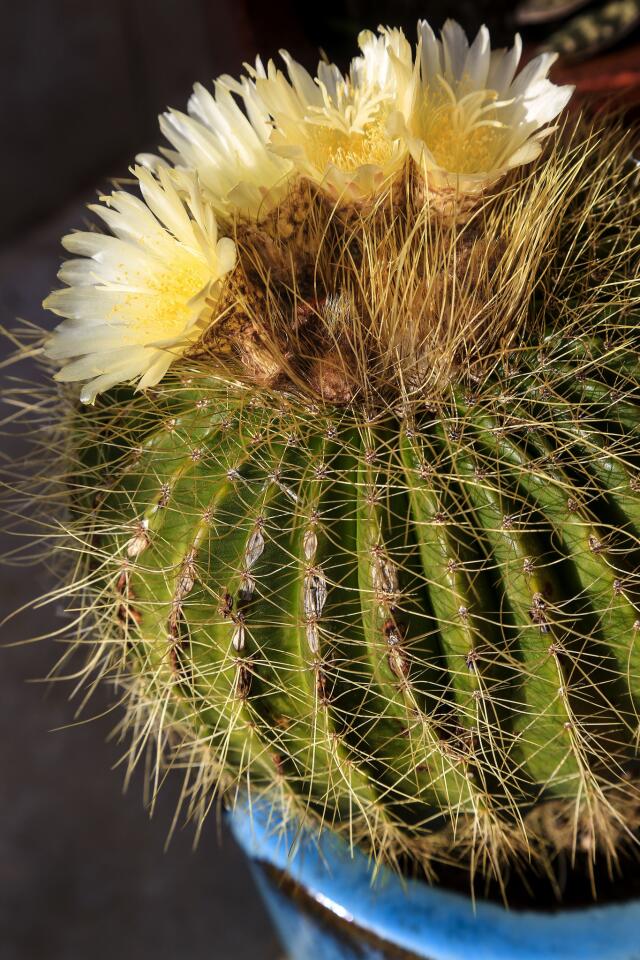
Parodia schumanniana, the size of a cantaloupe and adorned with beautiful yellow flowers. (Ricardo DeAratanha / Los Angeles Times)
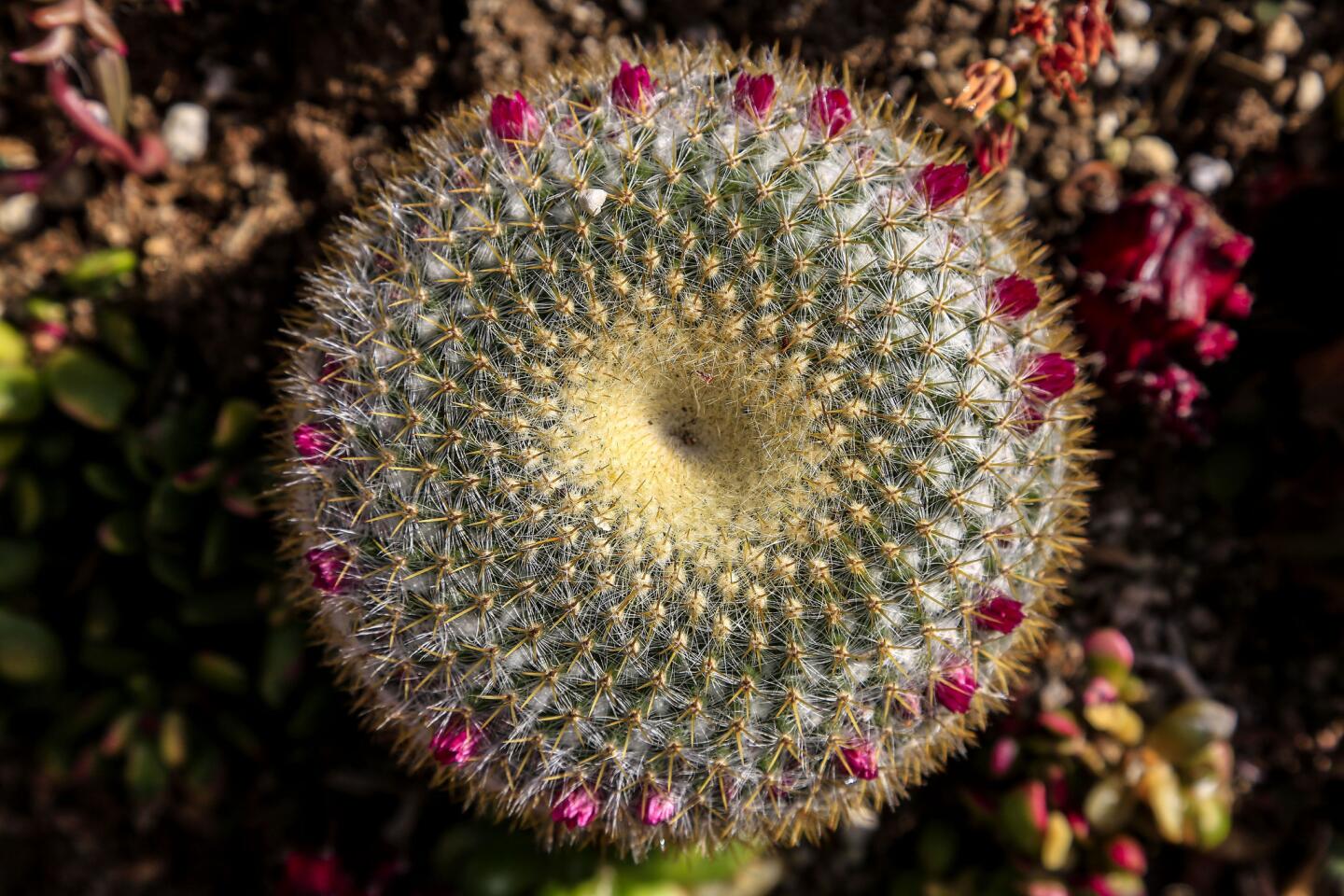
Mammillaria meuhlenpfordtii, more commonly known as pincushion cactus. (Ricardo DeAratanha / Los Angeles Times)
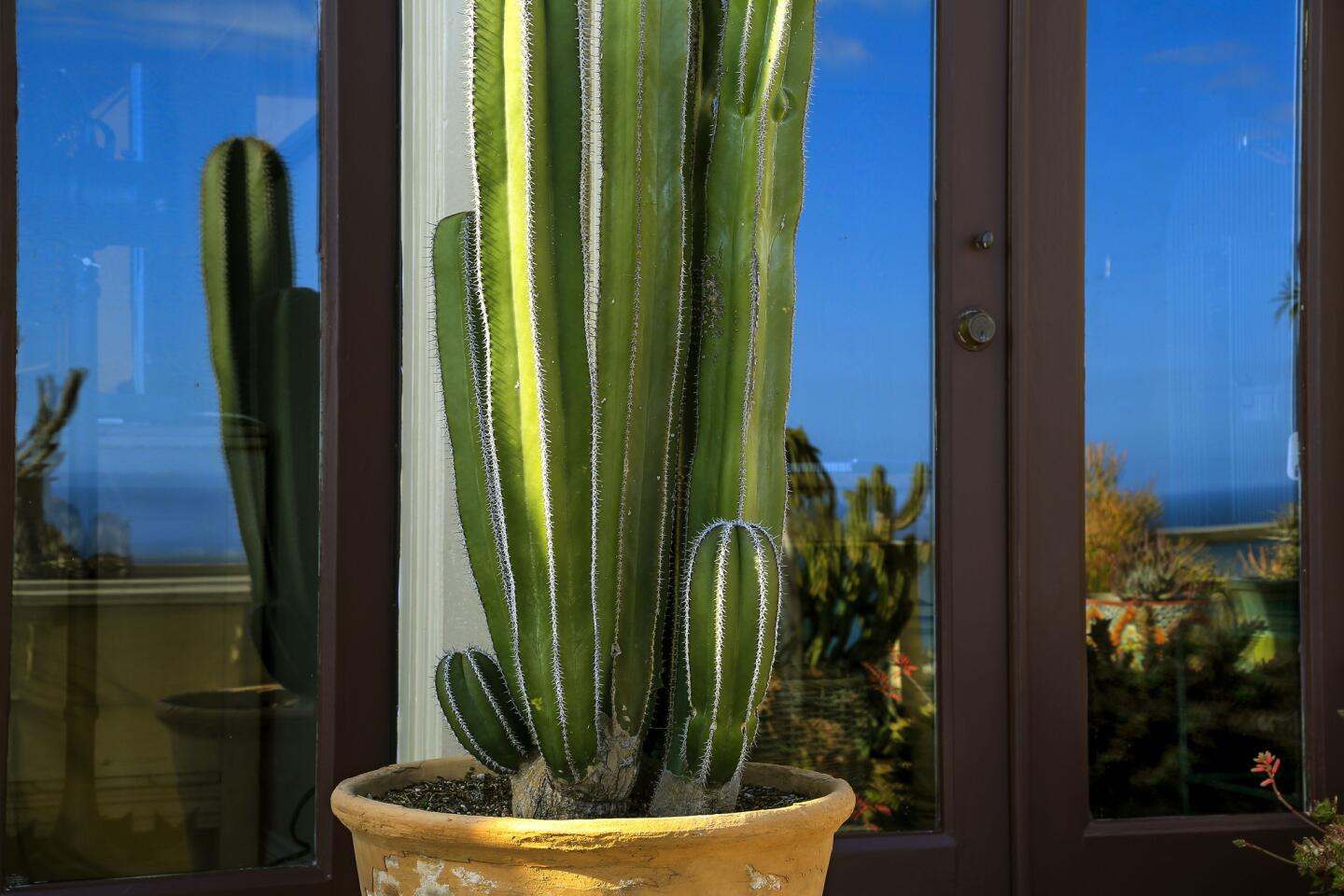
Mexican fence post cactus, also known as organ cactus (Pachycereus marginatus). Kamm found this one in the back area of Cosentino’s, the nursery on Pacific Coast Highway in Malibu. “It was in a pot that was all dried out and barely growing,” he says. (Ricardo DeAratanha / Los Angeles Times)
Advertisement
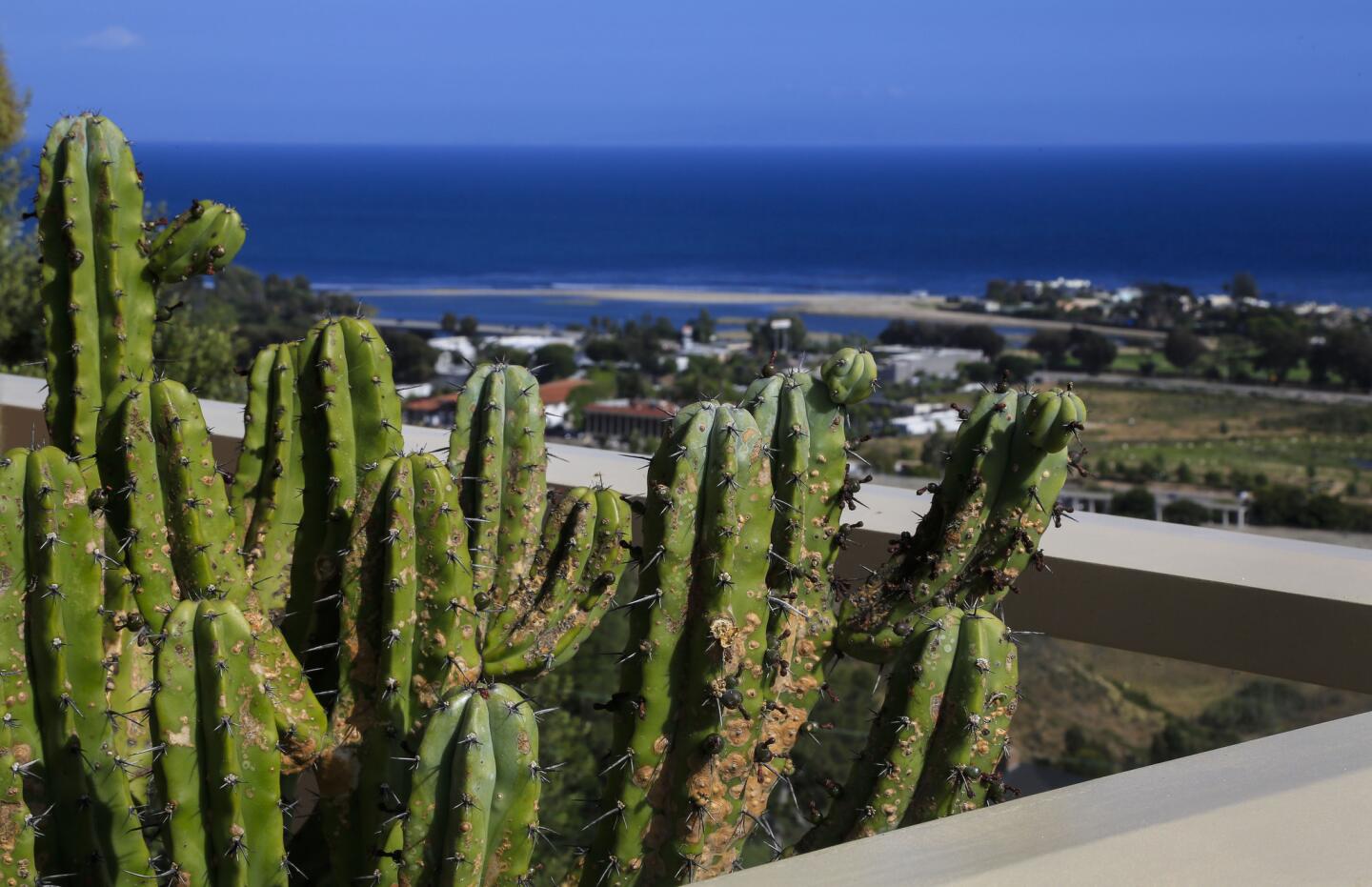
Myrtillocactus cochal, the first cactus Kamm bought nine years ago. Back then, it had just one branch. (Ricardo DeAratanha / Los Angeles Times)
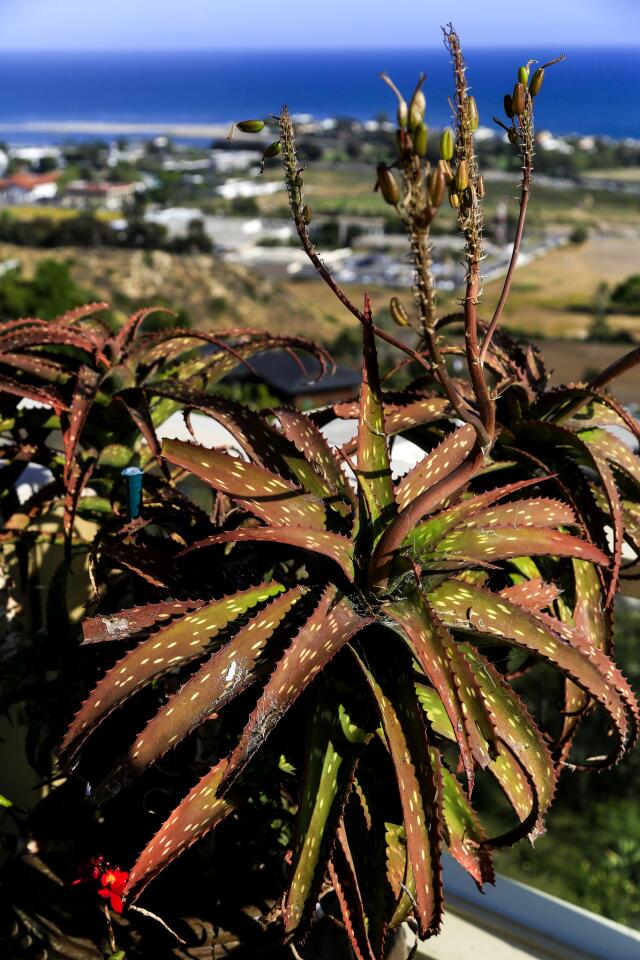
An aloe hybrid called Cynthia Giddy (Aloe cameronii x lateritia) is named after the South African nurserywoman who selected it. “A pair of California nightingales set up their nest for three years running,” said Kamm, who pruned the plant last year. The birds haven’t been back. (Ricardo DeAratanha / Los Angeles Times)
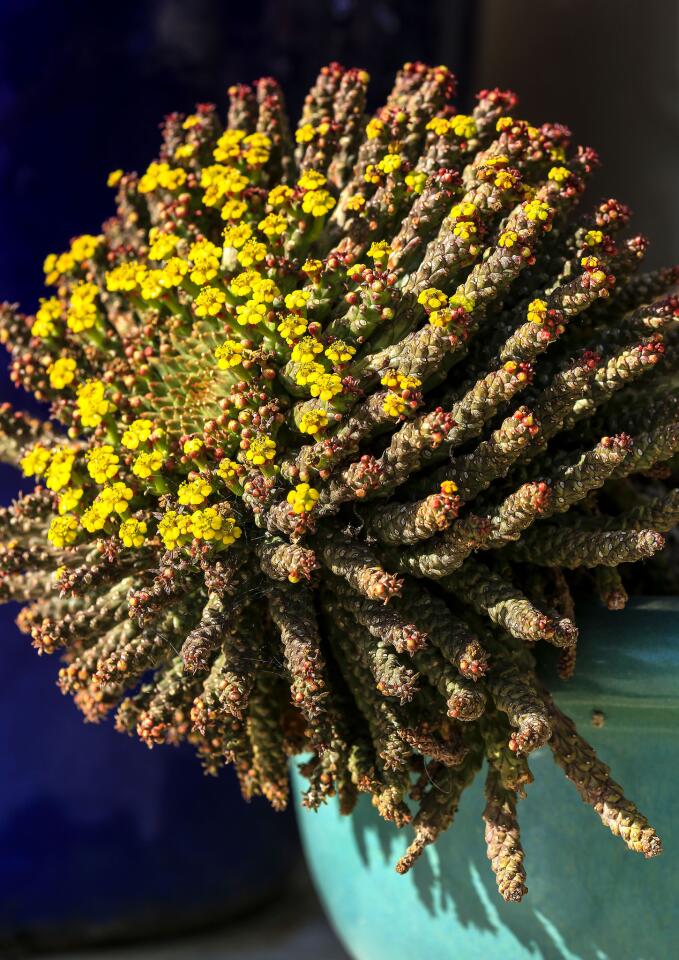
Euphorbia flanaganii is loaded with tiny yellow flowers, but it’s one of the plants for which the hummingbirds have shown no interest. (Ricardo DeAratanha / Los Angeles Times)
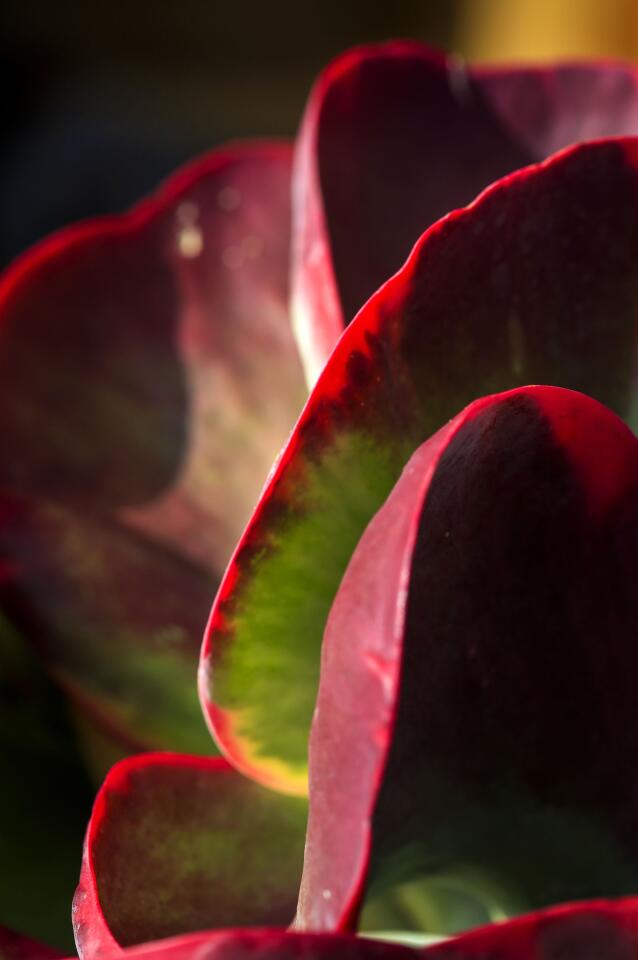
A cultivar of Kalanchoe luciae called Fantastic has deep red leaf edges. (Ricardo DeAratanha / Los Angeles Times)
Advertisement
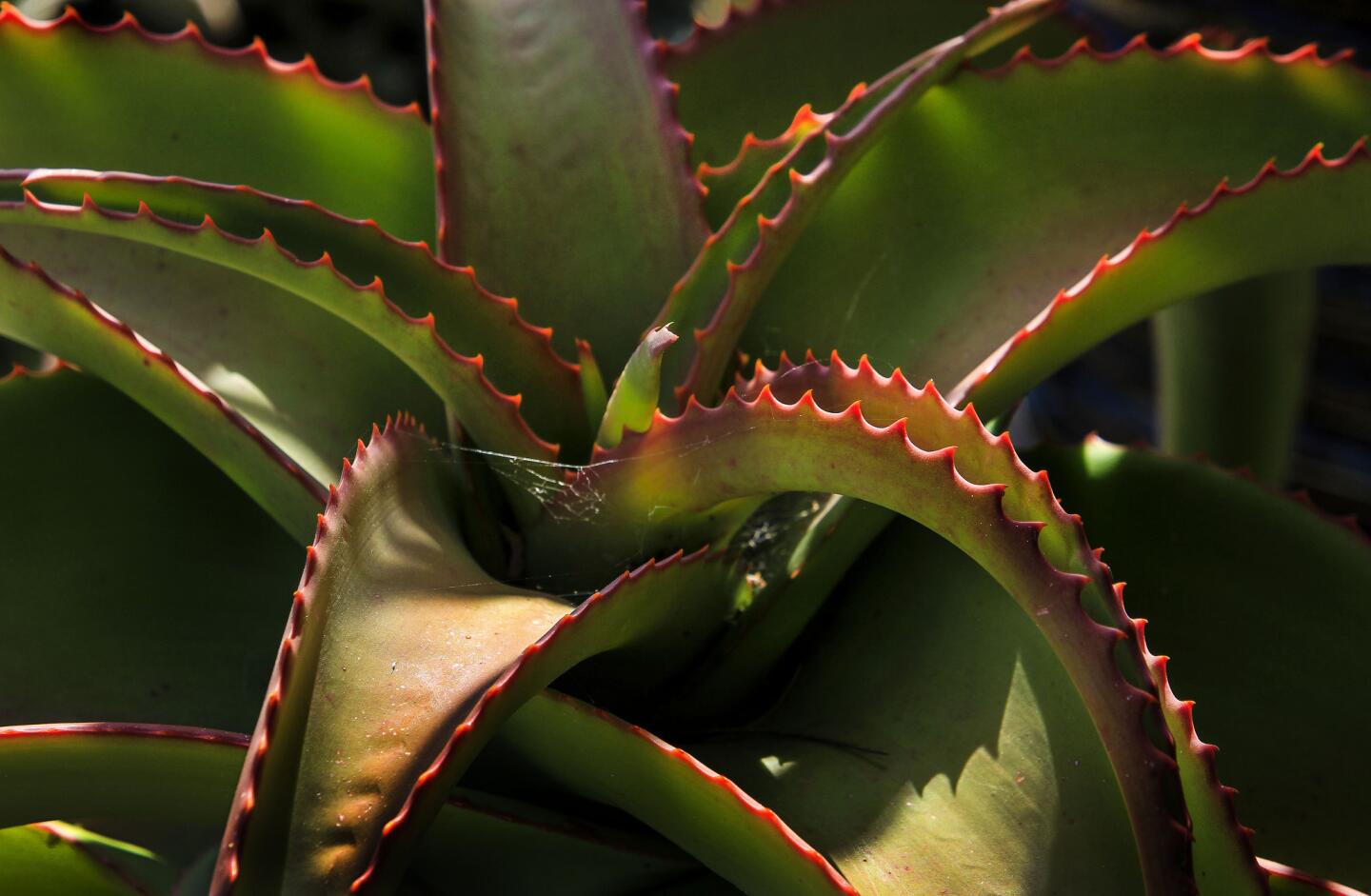
Aloe vanbelenni changes color: salmon-red in cold, green in heat.
(Ricardo DeAratanha / Los Angeles Times)



